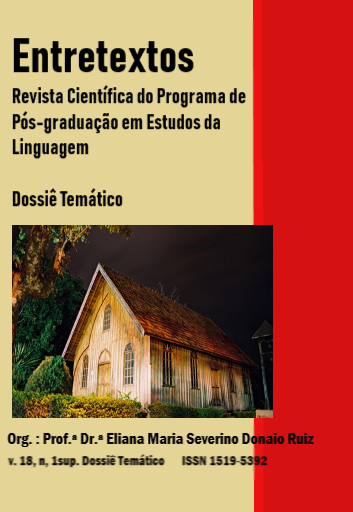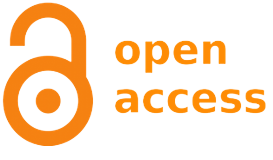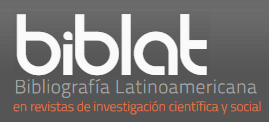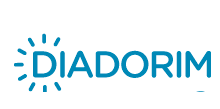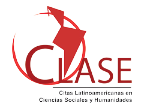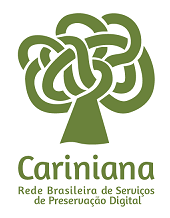WhatsApp as a tool in English teaching-learning
DOI:
https://doi.org/10.5433/1519-5392.2018v18n1Supl.p241Keywords:
English teaching-learning, Educational technology, WhatsAppAbstract
The technological influence in the different social spheres of the contemporary world is undeniable. Thus, within the educational context, technological tools promise to enhance pedagogical practices (COSTA, LOPES, 2015, PRENSKY, 2010 among others). In this respect, WhatsApp can be a powerful tool in language teachinglearning (ARIMURA; TAKAKI, 2014; BELÉM, 2014). Taking these assumptions into account, this article presents a didactic proposal envisioning the linguistic development in the English language, both in the oral and written skills. We hope that this proposal can contribute to the theoretical-methodological enrichment of the literature, since there is a shortage of empirical studies in this theme. In addition, this research emphasizes the importance of feedback, which in turn has been neglected in studies conducted in the field.
Downloads
References
ALBUQUERQUE, Odla Cristianne Patritota; BOTTENTUIT JUNIOR, João Batista. Ferramentas da Web 2.0 no processo de ensino- aprendizagem da língua inglesa: um estudo na escola de Idiomas Yázigi na cidade de São Luís. 6° SIMPÓSIO HIPERTEXTO E TECNOLOGIAS NA EDUCAÇÃO/ 2° COLÓQUIO INTERNACIONAL COM TECNOLOGIAS. Recife: UFPE. Anais Eletrônicos, dez. 2015, p. 1-20.
ARIMURA, Jane Pereira; TAKAKI, Nara Hiroko. Letramento no WhatsApp: Agência Horizontalizada em PIBIC em Letras. Letras Escreve, v. 4, n.1, p. 51-98, 2014.
BELÉM, Breno de Campos. Short Message Service e WhatsApp: interações textuais por meio de dispositivos móveis. UEADSL. ANAIS DO CONGRESSO NACIONAL UNIVERSIDADE, EAD E SOFTWARE LIVRE. Belo Horizonte: UFMG, Anais v. 2, n.5, 2014, p.1-4.
BEARNE, Eve; WOLSTENCROFT, Helen. Visual approaches to teaching writing: Multimodal literacy 5-11. New York: Sage. 2007
BELLONI, Maria Luiza. Educação a distância. Campinas: Editora Autores Associados, 2003.
BORDINI, Sueli Ribeiro Marques; EL KADRI, Michele Salles. A Utilização do Aparelho Celular nas Aulas de Inglês: relato de uma experiência. In: PARANÁ. Os Desafios da Escola Pública Paranaense na Perspectiva do Professor PDE. Curitiba: SEED, artigos, 2014, 32 p.
BRASIL é um dos países que mais usam WhatsApp, diz pesquisa. Revista Exame. São Paulo. 30/06/2016. Disponível em < http://exame.abril.com.br/tecnologia/brasil-e-umdos-paises-que-mais-usam-whatsapp-diz-pesquisa/>. Acesso em: 27 dez. 2016.
BRITISH COUNCIL. Teaching English: O Ensino de Inglês na Educação Pública Brasileira. 1.ed. São Paulo, 2015.
BUCKINGHAM, David. Cultura digital, educação midiática e o lugar da escolarização. Educação & Realidade, Porto Alegre, v. 35, n.3, p.37-58, 2010
CHAPELLE Carol. English language learning and technology: Lectures on applied linguistics in the age of information and communication technology. John: Benjamins Publishing; 2003.
COSTA, Dilermando Moraes; LOPES, Jurema Rosa. A perspectiva docente quanto ao uso do WhatsApp como ferramenta adicional ao ensino de inglês: um experimento em um curso livre de idiomas. XIX CONGRESSO NACIONAL DE LINGUÍSTICA E FILOLOGIA. Línguas estrangeiras e tradução. Rio de Janeiro: cadernos do CNLF, v. 20, n.1 – Línguas Clássicas, Textos Clássicos, 2015, p. 43-54.
CRISTÓVÃO, Vera Lúcia Lopes.; ANJOS-SANTOS, Lucas Moreira dos. Por uma pedagogia de gêneros digitais para o ensino e educação inicial do professor de língua inglesa. In: RAMOS, Rosindra de Castro Guerra.; DAMIÃO, Silvia Matravolgyi; CASTRO, Solange Terezinha Ricardo de. (Org.) Experiências didáticas no ensino-aprendizagem de língua inglesa em contextos diversos. Campinas, SP: Mercado de Letras, 2015, p. 107-124.
DIONÍSIO, Angela Paiva. Gêneros multimodais e multiletramento. In: KARWOSKI, Mário Acir. et al. (Org.).Gêneros textuais: reflexões e ensino. Palmas: Kaygangue, p. 137-152, 2005.
HOBBS, Renee; JENSEN, Amy. The past, present, and future of media literacy education. Journal of media literacy education, v.1, n.1, 2013, p.1.
JUNQUEIRA, Eduardo. The Cyberculture Theories and Teacher Preparation at the LIFEUFC Project in Brazil. International Journal of Education and Development using Information and Communication Technology, v. 11, n.3, p.109, 2015.
KAIESKI, Naira; GRINGS, Jacques Andre; FETTER, Shirlei Alexandra. Um Estudo sobre as Possibilidades Pedagógicas de Utilização do WhatsApp. CINTED-UFRGS: Novas Tecnologias na Educação. v.13, n.2, p. 1-10, 2015
LEITE, Natalia Costa; SILVA, Marden Oliveira. WhatsApp: caracterização do gênero chat em contexto de ensino de línguas estrangeiras. Texto Live: Linguagem e Tecnologia, v.8, n. 1, p. 85-97, 2015.
LÉVY, Pierre. A nova relação com o saber. In: LÉVY, Pierre. Cibercultura. Tradução: Carlos Irineu da Costa. São Paulo: Editora 34, p. 159-170, 1999.
LEVY, Mike; HUBBARD, Philip. 2005. Why call CALL “CALL”? Computer Assisted Language Learning, v. 18, n. 3, p.143-149, 2005.
LIMA, Laís Teixeira.; SOUZA, Sonia Maria de Fonseca.; LUQUETTI, Eliana Crispim França. O Ensino da Habilidade Oral da Língua Inglesa nas Escolas Públicas. Rio de Janeiro: Cadernos do CNLF, v. 8, n. 10-, p.86-103, 2014.
MARTINS, CLaudia Beatriz Monte Jorge.; MOREIRA, Herivelto. “O campo CALL (Computer Assisted Language Learning): definições, escopo e abrangência. Revista Calidoscópio, v. 10, n 3, pp. 247-255, set/dez 2012.
MARTINS, Nayara Santana; CLAUDIO, Elexsandra Maria Martins. O uso do WhatsApp na educação: as visões dos licenciandos da Universidade Federal do Acre. X SIMPÓSIO LINGUAGEM E IDENTIDADES DA/NA AMAZÔNIA SUL OCIDENTAL/ VIII COLÓQUIO INTERNACIONAL “AS AMAZÔNIAS, AS ÁFRICAS E AS ÁFRICAS NA PAN-AMAZÔNIA”. Rio Branco: UFAC. Anais. 2014, p. 1-20.
PRENSKY, Marc. O papel da tecnologia no ensino e na sala de aula. Conjectura, Caxias do Sul, v. 15, n. 2,201-204, 2010. Disponível em: http://www.ucs.br/etc/revistas/index.php/conjectura/article/viewFile/335/289. Acesso em: 06 fev.2015.
RAZAVI, Azam;GHANIZADEH, Afsaneh.;AKBARI, Omid. Teachers ’ perceptions of the use of multimedia in teaching English in official and non-official language learning settings. International Journal of Research Studies in Educational Technology. v. 5, n. 1, p. 97–109, 2016.
RICHARDS, Jack. Teaching Listening and Speaking: from theory to practice.New York: Cambridge University Press, 2008.
SOUZA, Melody Pablos. Ressignificando o Papel do Celular em Sala de Aula: Possibilidades de Utilização no Ensino de Língua Inglesa. 2013 51fls. Monografia (especialização em Língua Inglesa) -Faculdade de Humanidades e Direito da Universidade Metodista de São Paulo, São Bernardo do Campo, 2013.
SPECTOR, Jonathan Michael. Conceptualizing the emerging field of smart learning environments. Smart Learning Environment, v. 1, n.2, p. 1–10, 2014a.
SPECTOR, Jonathan Michael. Remarks on MOOCs and mini-MOOCs.Educational Technology Research & Development, v. 62, n. 3, p. 385–392, 2014b
SPECTOR Jonathan Michael. Foundations of educational technology: Integrative approaches and interdisciplinary perspectives. London: Routledge; 2015. USÓ-JUAN, Esther.; MARTÍNEZ-FLOR, Alicia. Current Trends in the Development and Teaching of the Four Language Skills. 2 ed. Berlin: Mouton de Gruyter, 2006, 498p.
WARSCHAUER, Mark. The Changing Global Economy and the Future of English Teaching. Tesol Quartely, v. 34, n. 3, p. 511–535, 2000.
WHATSAPP. Disponível em: http://www1.folha.uol.com.br/tec/2016/02/1736093-whatsapp-chega-a-1-bilhao-de-usuarios.shtml. Acesso em: 27 dez.2016.
WHATSAPP chega a 1 bilhão de usuários. Folha de São Paulo (online). São Paulo. 1/2/2016. Disponível em: http://www1.folha.uol.com.br/tec/2016/02/1736093-whatsapp-chega-a-1-bilhao-de-usuarios.shtml. Acesso em:27 dez.2016.
ZARDINI, Adriana Salles. O uso do WhatsApp na sala de aula de Língua Inglesa – relato de experiência em um curso de idiomas. V SILID: SIMPÓSIO SOBRE O LIVRO DIDÁTICO DE LÍNGUA ESTRANGEIRA/ IV SIMAR: SIMPÓSIO SOBRE MATERIAIS E RECURSOS DIDÁTICOS. Rio de Janeiro: Anais. PUC-Rio, 28-30 de julho de 2015, p. 1- 12.
ZHANG, Chunqin. A Study of Internet Use in EFL Teaching and Learning in Northwest. Asian Social Science, v. 9, n. 2, p. 48–52, 2013.
Downloads
Published
How to Cite
Issue
Section
License
Entretextos adota a Licença Creative Commons Attribution 4.0 International, portanto, os direitos autorais relativos aos artigos publicados são do(s) autor (es).
Sob essa licença é possível: Compartilhar - copiar e redistribuir o material em qualquer suporte ou formato. Adaptar - remixar, transformar, e criar a partir do material, atribuindo o devido crédito e prover um link para a licença e indicar se mudanças foram feitas.

